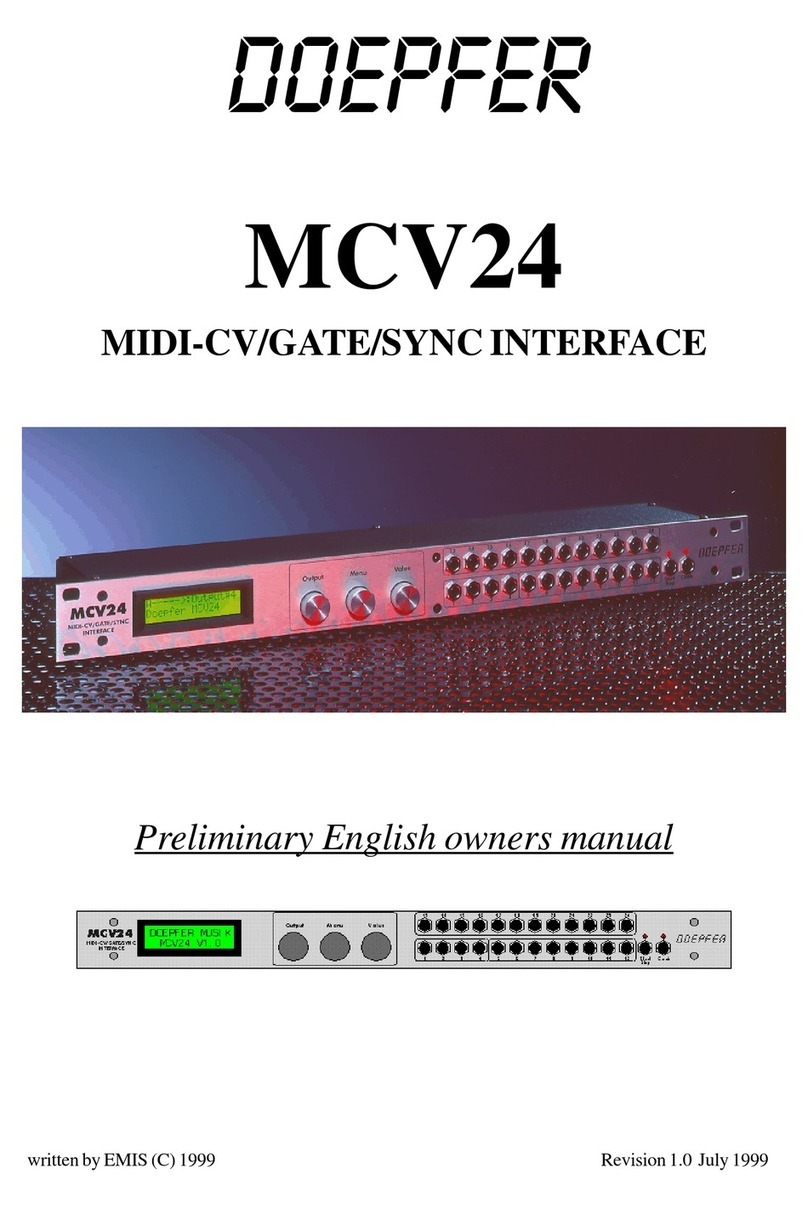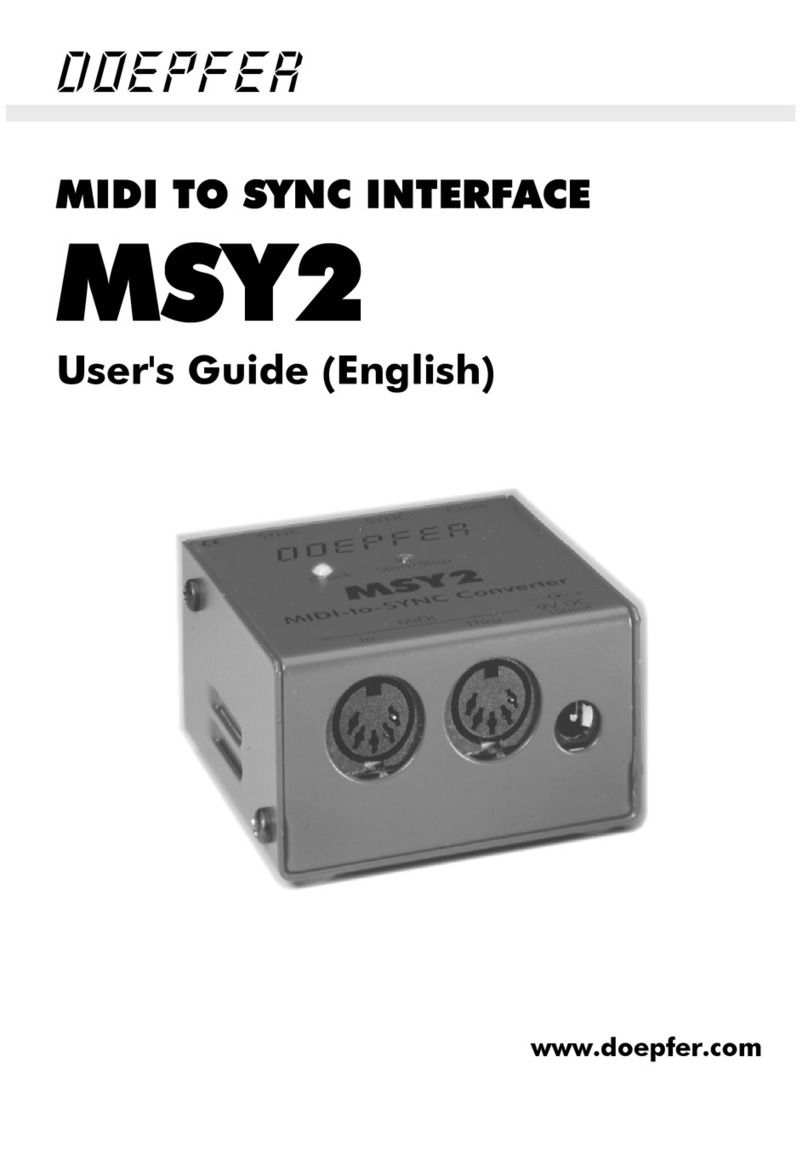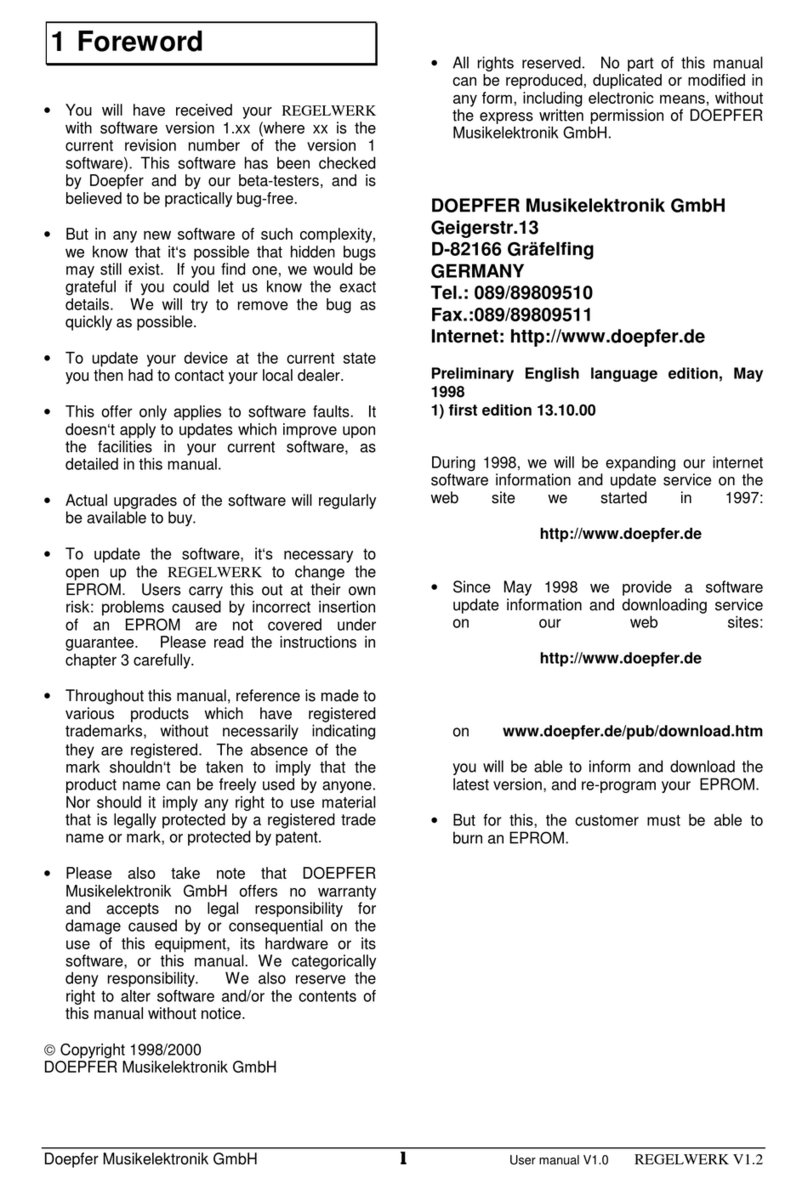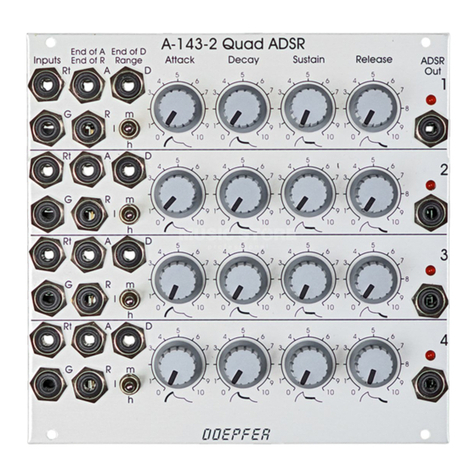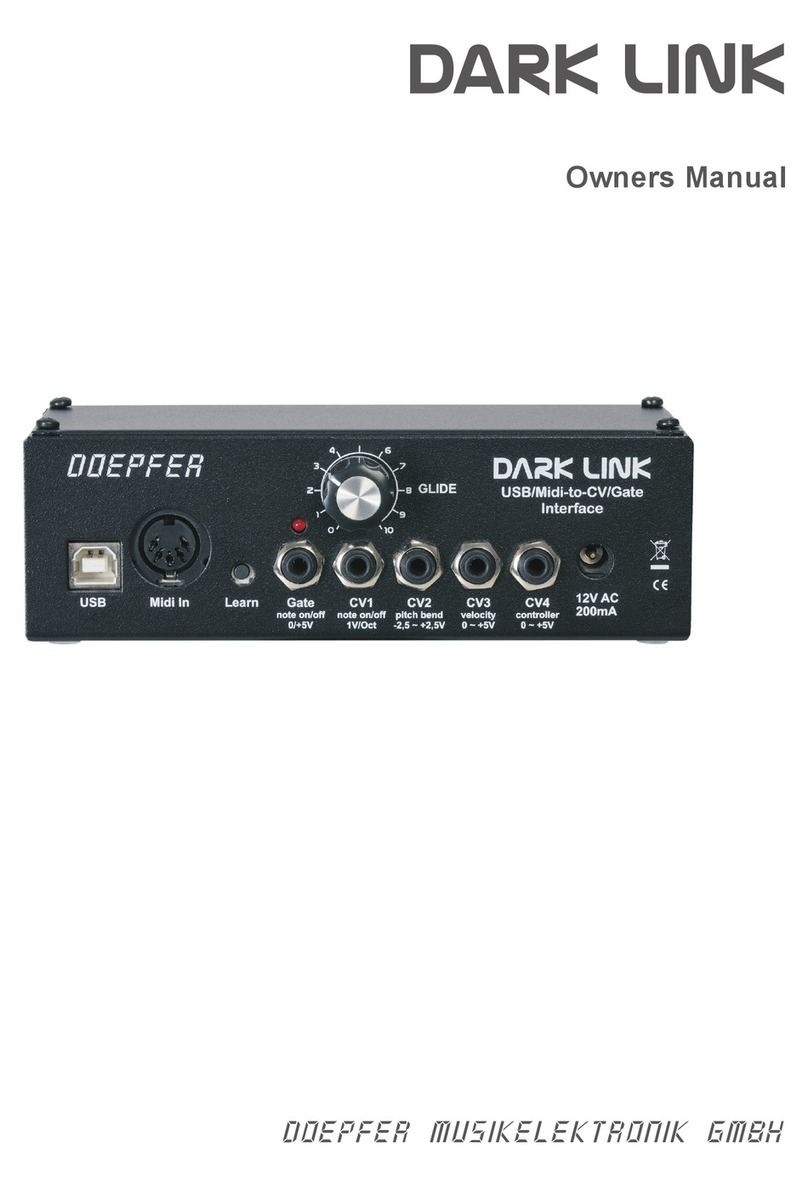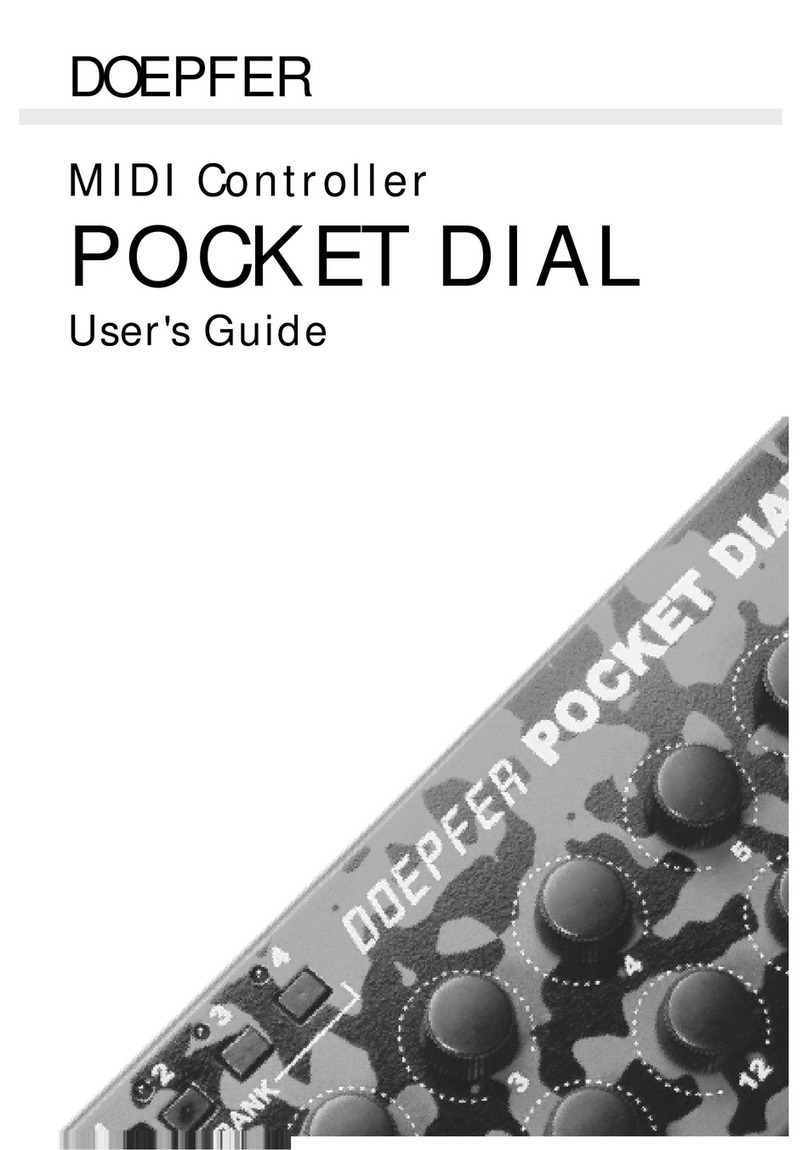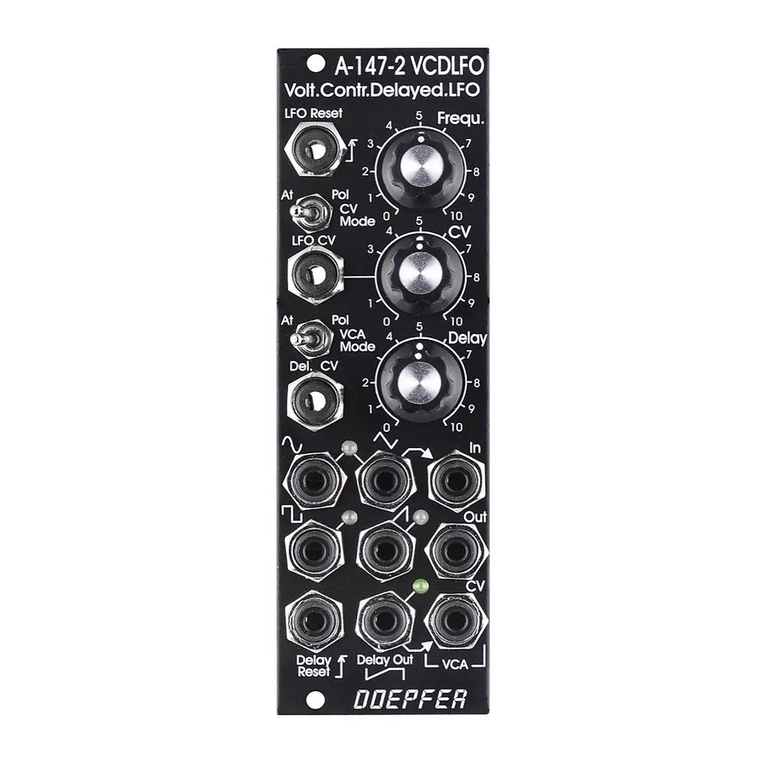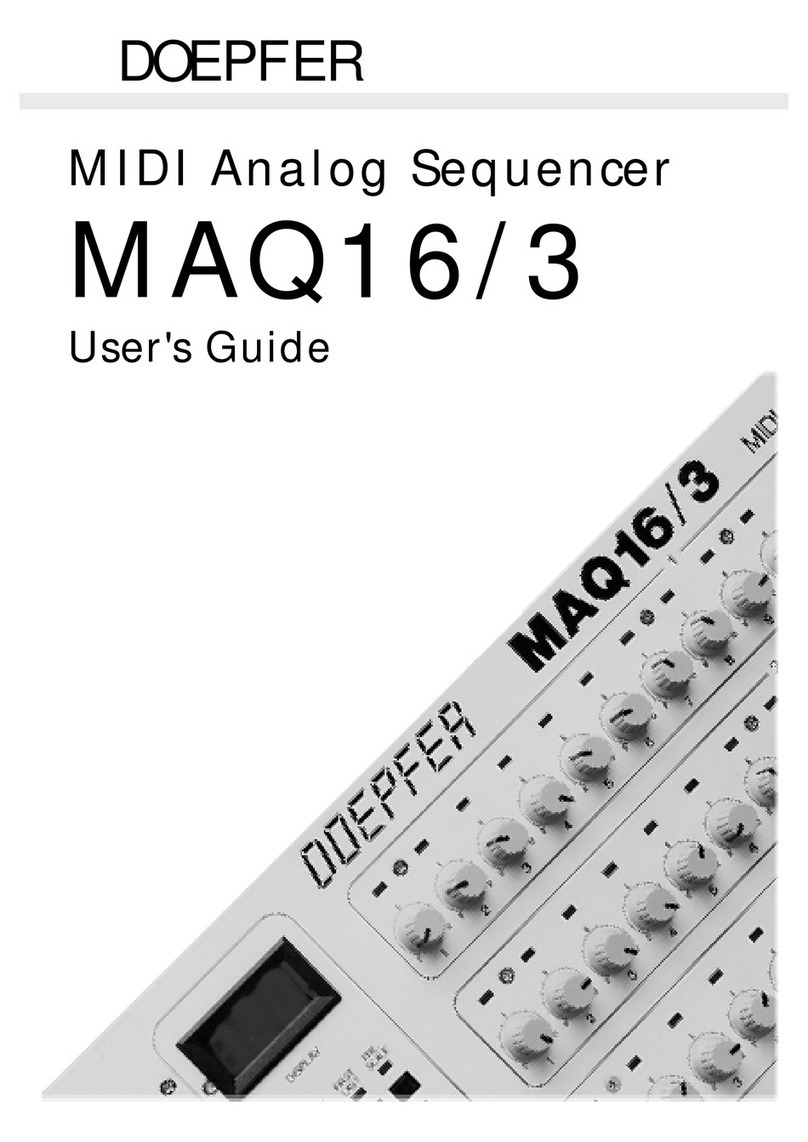doepfer System A - 100 Analog / Trigger Sequencer A-155
5
4 CV knobs (upper row)
You use the CV knobs 4(upper row) to set the
voltage output for each step in the upper analog CV
row. The control voltage set for each step is output at
the upper Pre Out §socket.
The range of voltage output can be controlled with
the range switch 6. Three very accurate voltage ran-
ges are provided (see below) so that the upper analog
CV row is ideally suited for precise VCO pitch control.
5 CV knobs (lower row)
You use the CV knobs 5(lower row) to set the voltage
output for each step in the lower analog CV row. The
control voltage set for each step is output at the lower
Pre Out §socket.
You use the Scale control 7to adjust the range of
the voltages controlled by the CV knobs.
H If for any step you patch in an external CV /
audio input (socket $), the corresponding-
knob in the lower row doesn’t put out its own
voltage.
Instead, it acts as an attenuator for the
external CV / audio signal, before sending it
to the lower Pre Out output §.
6 Range
The position of the Range switch (a three-way toggle
switch) 6selects the precise voltage control range,
within which the upper row of CV knobs 4will operate.
There are three ranges to choose from:
• up : 1 V (i.e. one octave)
• centre : 2 V (i.e. two octaves)
• down : 4 V (i.e. four octaves).
The maximum voltage is obtained by turning the knobs
fully clockwise.
7 Scale
Control 7sets the range of control voltages, within
which the lower row of CV knobs 5will operate. If an
external CV / audio signal is patched into any of the
sockets $, the scale control affects the amount of
attenuation the CV knob will produce on that voltage.
8 Glide
The internal slew limiter's rate is set with control 8.
If for the current step in a sequence (e.g. step three)
the slew limiter is switched in (by a "low" control
signal at the Glide Ctrl. §socket), the control voltage
sent to output Post Out §doesn’t jump instantly from
the voltage at the previous step (in this example, step
two). Instead, it glides gradually to the new voltage, at
